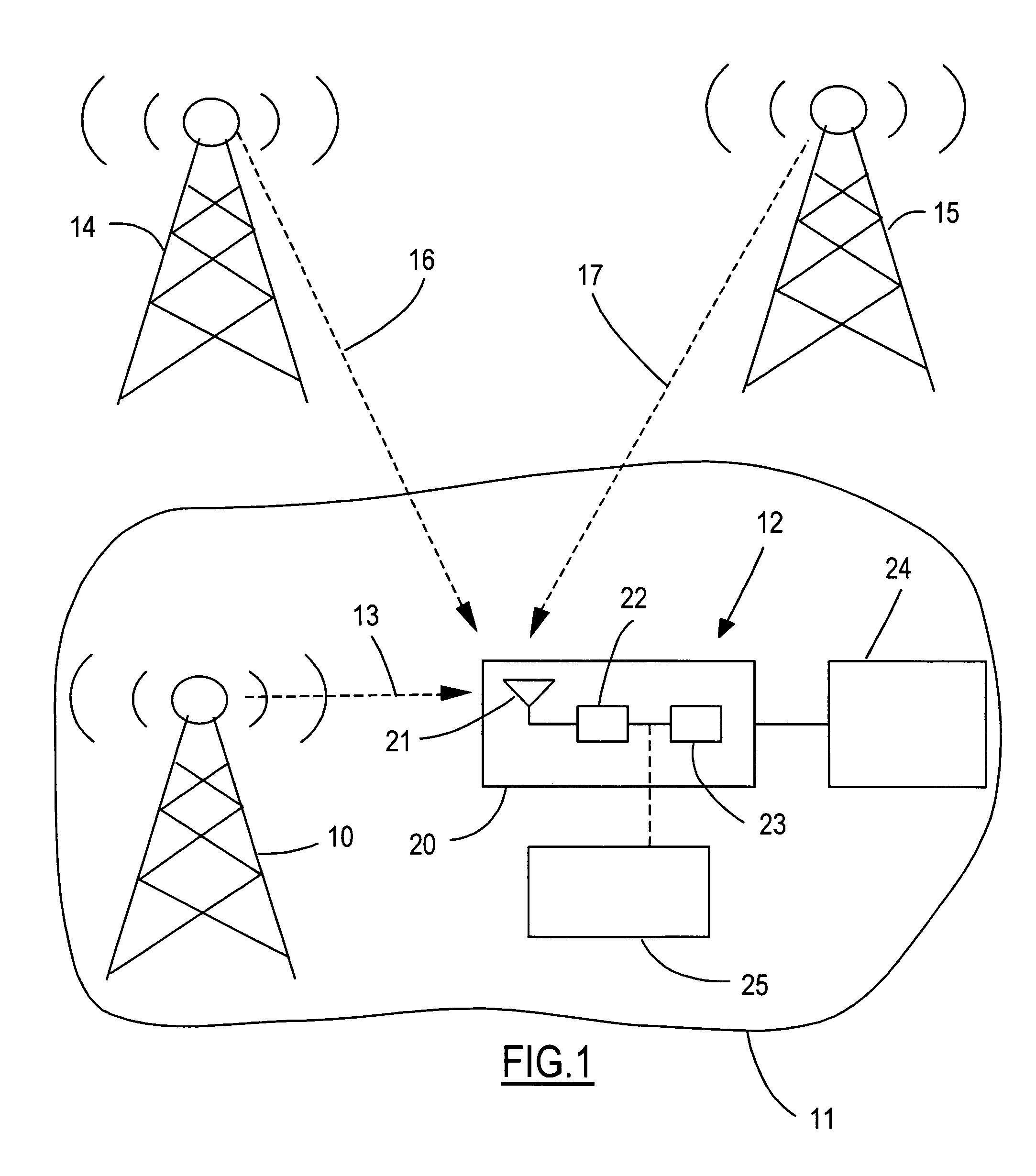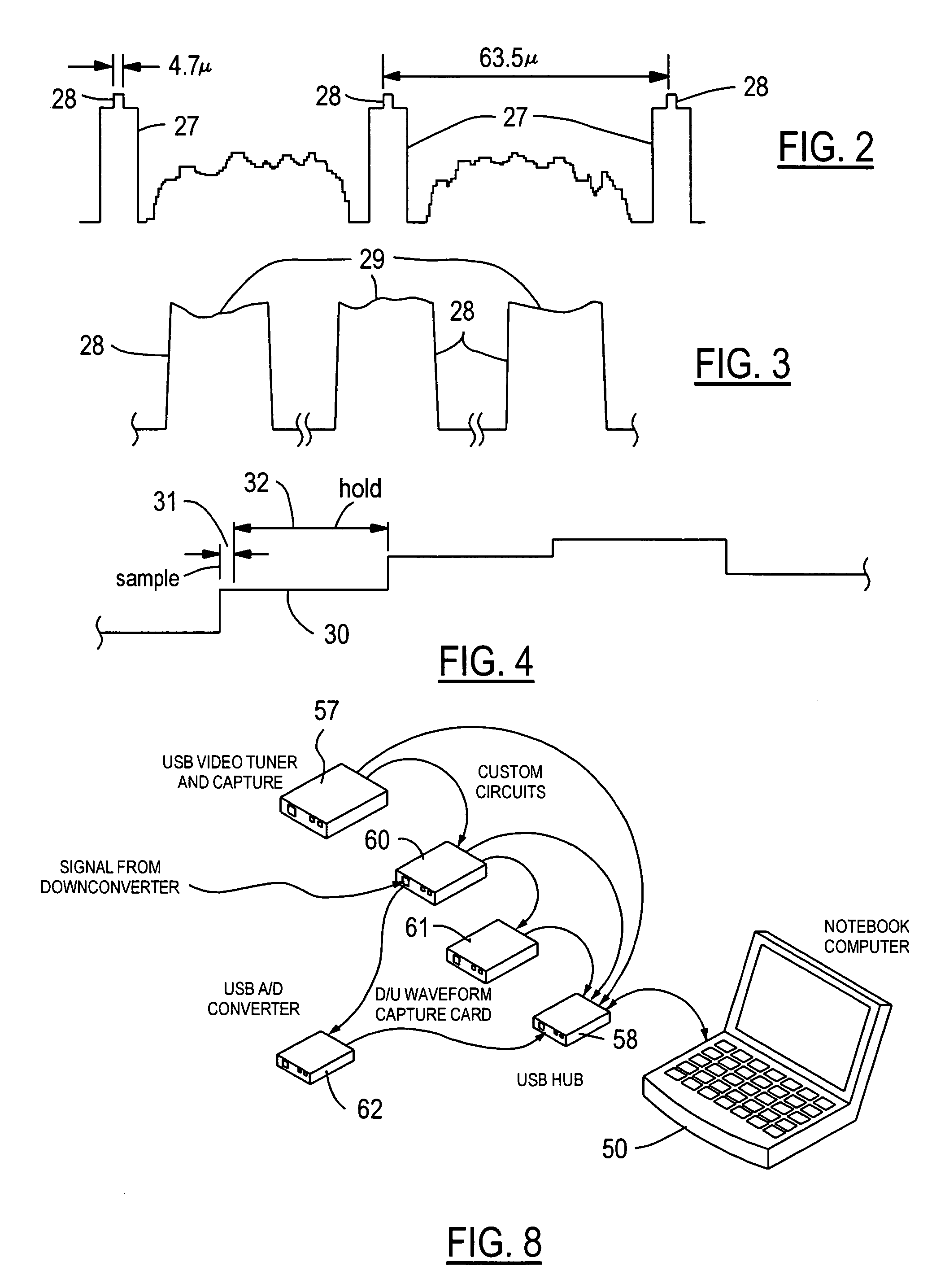Measurement system for determining desired/undesired ratio of wireless video signals
- Summary
- Abstract
- Description
- Claims
- Application Information
AI Technical Summary
Benefits of technology
Problems solved by technology
Method used
Image
Examples
Embodiment Construction
[0025]Referring now to the drawings, FIG. 1 shows a transmitter 10 with a corresponding service area 11 having a receive site 12. RF broadcast signals 13 propagate from transmitter 10 to receiving site 12. Undesired transmitters 14 and 15 in other service areas radiate broadcast signals 16 and 17, respectively, that also reach receiving site 12. The present invention measures the D / U ratio corresponding to the various broadcasts to ensure compliance with FCC regulatory levels and to facilitate adjustments by the operators of the transmitters to achieve compliance.
[0026]A receiver 20 located at receiving site 12 is connected to a video distribution system 24, such as a cable headend. Receiver 20 includes an antenna 21, a downconverter 22, and a demodulator 23. A test system 25 of the present invention is connected to the output of downconverter 22.
[0027]In order to be able to measure the much lower level undesired signals in the presence of the strong desired signals, the present inv...
PUM
 Login to View More
Login to View More Abstract
Description
Claims
Application Information
 Login to View More
Login to View More - R&D Engineer
- R&D Manager
- IP Professional
- Industry Leading Data Capabilities
- Powerful AI technology
- Patent DNA Extraction
Browse by: Latest US Patents, China's latest patents, Technical Efficacy Thesaurus, Application Domain, Technology Topic, Popular Technical Reports.
© 2024 PatSnap. All rights reserved.Legal|Privacy policy|Modern Slavery Act Transparency Statement|Sitemap|About US| Contact US: help@patsnap.com










